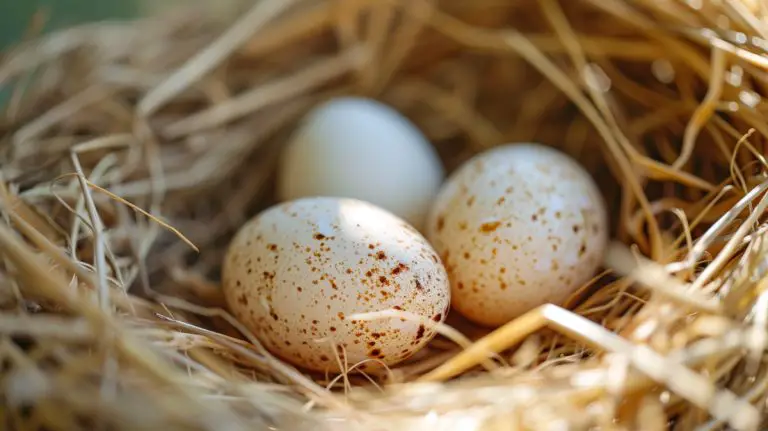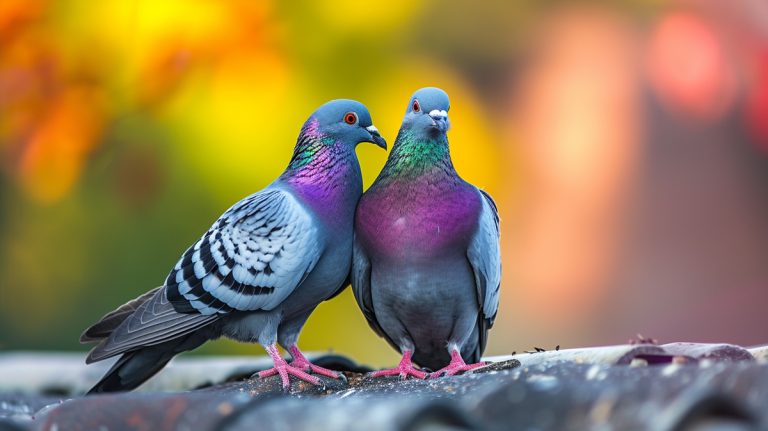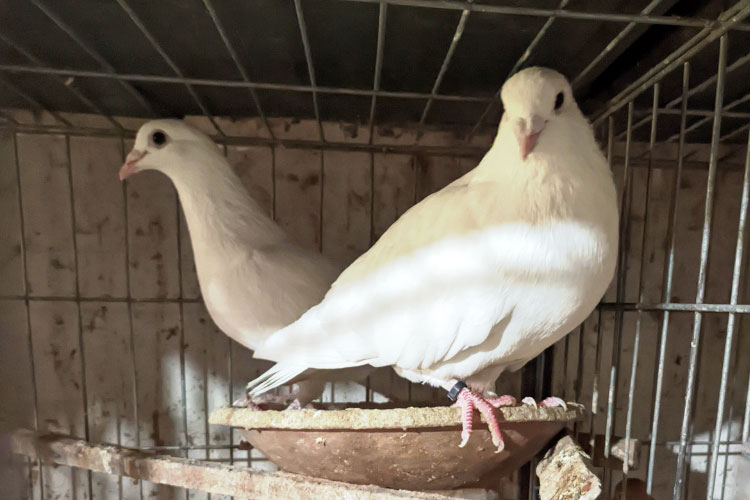Homing Pigeon Training: Monitoring and Optimizing Progress
Are you fascinated by the incredible abilities of homing pigeons? Well, you’re not alone. As a pigeon enthusiast myself, I have spent years diving deep into the world of homing pigeon training. These remarkable birds possess an innate sense of direction that allows them to navigate vast distances and find their way back home. In this article, I’ll share my expertise and guide you through the essential steps of training your very own homing pigeons. Get ready to embark on an exciting journey into the world of pigeon training!
Understanding Homing Pigeons
Homing pigeons are fascinating creatures with an innate sense of direction that allows them to navigate vast distances and find their way back home. As someone who has spent years training these amazing birds, I can attest to their remarkable abilities. In this section, I’ll guide you through the essentials of understanding homing pigeons.
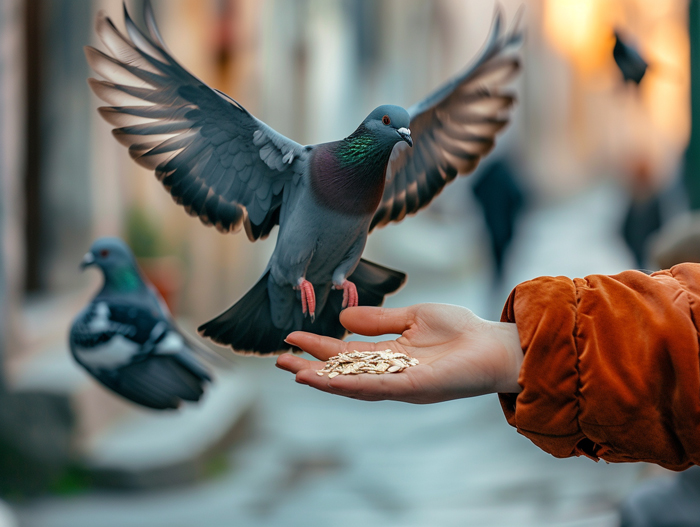
- Sense of Direction:
Homing pigeons possess a unique ability to sense the Earth’s magnetic field, which enables them to navigate with precision over long distances. They rely on this internal compass to orient themselves and determine the correct path to their home loft. - Homing Instinct:
These birds have a strong homing instinct, meaning they possess a natural desire to return to their place of origin. It’s believed that this instinct is genetic and passed down through generations of pigeons. This is what makes them such excellent candidates for training. - Training Methods:
To effectively train homing pigeons, it’s crucial to create a strong bond and establish a sense of trust between you and the bird. This can be achieved through positive reinforcement techniques such as offering food rewards, consistent training sessions, and maintaining a calm and nurturing environment. - Loft Orientation:
Creating a proper loft is essential for successful homing pigeon training. The loft should be well-ventilated, spacious, and equipped with separate sections for nesting, feeding, and resting. Additionally, it should be strategically positioned to ensure the birds can easily orient themselves when released. - Familiarization Flights:
Once you’ve established a bond with your pigeons and have a suitable loft set up, it’s time to begin familiarization flights. This involves gradually increasing the distance between the loft and the release site, allowing the pigeons to become familiar with the route and reinforce their homing instinct.
By understanding the innate abilities of homing pigeons and implementing the right training methods, you can successfully train these incredible birds to navigate long distances and return home. The next section will delve into the specific steps involved in training your own homing pigeons. Let’s continue on this fascinating journey together.
The Importance of Bonding
When it comes to training homing pigeons, building a strong bond between the trainer and the birds is of utmost importance. This bond is the foundation for successful training and ensuring that the pigeons have a strong homing instinct.
Positive reinforcement techniques play a vital role in creating this bond. By rewarding the pigeons with treats, praise, or attention when they exhibit desired behaviors, it establishes a positive association with the trainer. This encourages the birds to trust and rely on the trainer, which is crucial for their training success.

Moreover, spending regular quality time with the pigeons helps in establishing a personal connection. Just like humans, pigeons thrive on social interaction. By interacting with them, talking to them, and being present in their surroundings, they become familiar with the trainer’s presence and begin to recognize them as a trusted companion.
To enhance the bonding process, it’s essential to handle the pigeons gently. By being calm and patient around them, the trainer creates a safe and stress-free environment. This helps to build trust and confidence in the birds, allowing them to feel comfortable in the trainer’s presence.
A well-constructed pigeon loft also plays a significant role in fostering a strong bond. The loft should be clean, spacious, and provide a comfortable living environment for the pigeons. A clean and well-maintained loft reflects the trainer’s care and concern for the birds, further strengthening the bond between them.
Overall, building a strong bond with homing pigeons is crucial for their training success. Positive reinforcement, regular quality time, gentle handling, and a well-constructed loft all contribute to fostering trust and a strong connection between trainer and bird. By establishing this bond, the pigeons are more likely to develop a dependable homing instinct and become reliable flyers.
Loft Design and Preparation
When it comes to training homing pigeons, loft design and preparation play a crucial role. Let’s explore the factors that contribute to a well-designed and properly prepared loft:
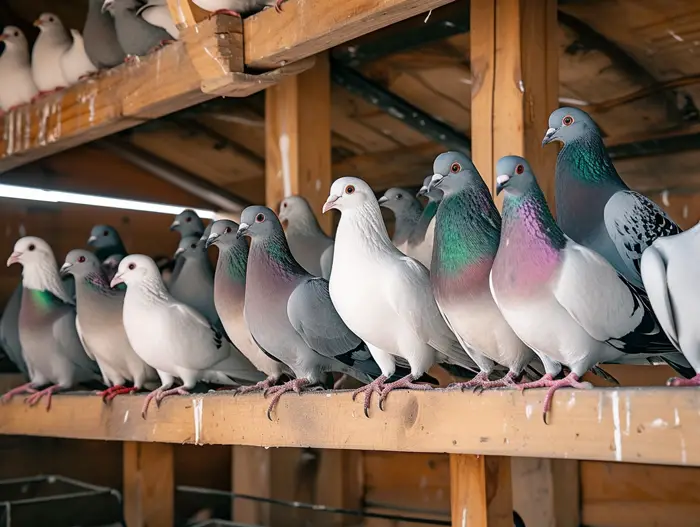
1. Size and Layout
A spacious and well-ventilated loft is essential for homing pigeons. It provides them with ample room to move around and exercise their wings. Additionally, a well-planned layout helps to create a sense of security for the pigeons, enabling them to feel comfortable and relaxed.
2. Nesting and Roosting Areas
Providing suitable nesting and roosting areas is essential for the overall well-being of homing pigeons. These areas should be cozy, clean, and easily accessible. Pigeons need a safe space to lay their eggs and rest after a long flight, so it’s important to make sure these areas are properly designed and maintained.
3. Lighting and Temperature
Good lighting is crucial in a pigeon loft as it helps the birds maintain a proper sleep-wake cycle. Natural light during the day and proper artificial lighting at night help to regulate their internal clock. Additionally, maintaining a comfortable temperature is vital for the pigeons’ health and well-being. A loft should be adequately insulated to protect the birds from extreme heat or cold.
4. Security Measures
Security is paramount when it comes to keeping homing pigeons safe. Installing wire meshes or screens on windows and vents prevents any potential predators from entering the loft. It’s also important to have a secure door that is kept closed at all times to minimize the risk of pigeons escaping or intruders getting in.
a well-designed and properly prepared loft is critical for successful homing pigeon training. The size and layout, nesting and roosting areas, lighting and temperature, as well as security measures, all contribute to a comfortable and safe environment for the pigeons. Providing these essential elements sets the stage for a successful training experience.
Stay tuned for the next section, where we’ll discuss the importance of proper nutrition and feeding techniques in homing pigeon training.
Choosing the Right Pigeons
When it comes to homing pigeon training, selecting the right birds is essential for success. Here are a few factors to consider when choosing your pigeons:
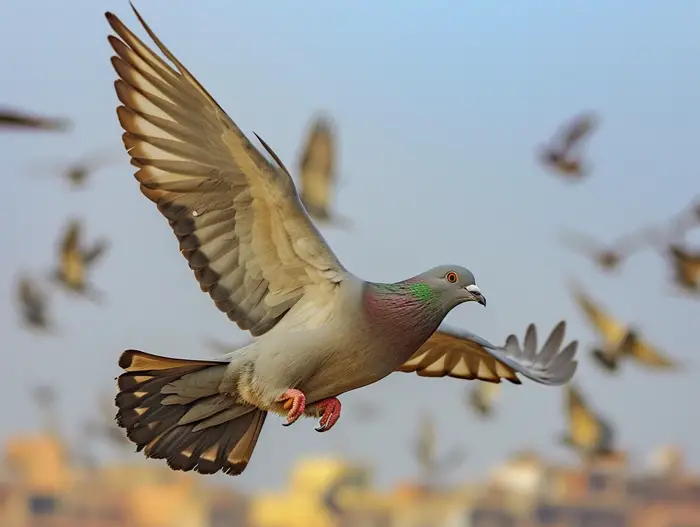
1. Age
Choose pigeons that are at least 6 to 8 weeks old. Younger pigeons may not have fully developed the necessary skills and instincts for homing. On the other hand, older pigeons may be harder to train.
2. Health
Ensure that the pigeons are in good health. Look for birds with bright eyes, clean feathers, and a lively demeanor. Avoid pigeons that appear sick or weak, as they may not be able to withstand the physical demands of training.
3. Breed
Different pigeon breeds have varying capabilities when it comes to homing. Consider selecting breeds known for their homing abilities, such as Racing Homers or Swiss Mondains. These breeds have been bred and trained over generations for their skills in navigation and endurance.
4. Temperament
Look for pigeons that are calm and docile. Avoid birds that display aggressive or nervous behavior, as this can make training more challenging. Pigeons with a friendly and cooperative temperament are more likely to bond with you and respond well to training.
5. Pedigree
While not essential, consider pigeons with a good pedigree. Pigeons with a lineage of successful homing performance may have a higher chance of inheriting those skills. Pedigree information can typically be obtained from reputable breeders or pigeon organizations.
Remember, the foundation of successful homing pigeon training lies in choosing the right birds. By considering their age, health, breed, temperament, and pedigree, you can set yourself up for a smoother and more rewarding training experience.
Basic Training Techniques
When it comes to training homing pigeons, there are some basic techniques that every trainer should be familiar with. These techniques form the foundation for a successful training program. Let’s take a closer look at three essential training techniques:

- Target Training: One effective training technique is known as target training. This involves introducing a target to the pigeons, such as a pole or a specific location, and rewarding them when they successfully reach or land on the target. This helps them to associate the target with a positive outcome and reinforces the desired behavior.
- Clicker Training: Clicker training is another popular technique used in homing pigeon training. It involves using a clicker, a small handheld device that makes a distinct clicking sound when pressed. The clicker is paired with a reward, such as a treat, and the trainer clicks the device at the exact moment the pigeon performs the desired behavior. This helps to mark the behavior and reinforce its connection with the reward.
- Positive Reinforcement: Positive reinforcement is a fundamental training technique that involves rewarding the pigeon for exhibiting the desired behavior. This can be done through treats, praise, or other forms of positive reinforcement. By focusing on rewarding positive behaviors and ignoring undesired behaviors, trainers can effectively shape the behavior of the pigeons over time.
These basic training techniques lay the groundwork for more advanced training methods. As a trainer, it’s important to practice consistency, patience, and positive reinforcement throughout the training process. Remember, building a strong bond and trust with your pigeons is key to their success in homing pigeon training.
By implementing these training techniques, trainers can set their pigeons up for success and lay the foundation for advanced training. So, remember to target train, use clicker training, and apply positive reinforcement throughout your homing pigeon training journey.
Advanced Training Methods
When it comes to training homing pigeons, advanced training methods can take their skills to the next level. These techniques build upon the foundation established through basic training and help pigeons develop specialized abilities. Here are a few advanced training methods that can enhance the performance of homing pigeons:
1. Navigation Training: Homing pigeons have a natural sense of direction, but navigation training can sharpen their skills and improve their homing abilities. This method involves gradually increasing the distance of releases, encouraging pigeons to navigate back to their loft from unfamiliar locations. By gradually increasing the difficulty of the training, pigeons become more proficient at finding their way home.
2. Speed Training: Building speed is a crucial aspect of homing pigeon training. Speed training methods focus on improving the pigeons’ flight capabilities, allowing them to cover long distances in less time. This can be achieved through exercises that encourage fast and sustained flight, such as flying through obstacles or timed flights.
3. Endurance Training: In order to complete long-distance flights successfully, homing pigeons need exceptional endurance. Endurance training methods aim to improve the pigeons’ stamina and capacity for sustained flight. This can be achieved through conditioning exercises, such as flying longer distances or gradually increasing flight time.
4. Racing Training: Homing pigeon racing is a popular sport that pushes the boundaries of a pigeon’s capabilities. Racing training involves simulating race conditions and challenging pigeons to compete against each other. This type of training helps pigeons develop competitive instincts and enhances their racing performance.
5. Specific Task Training: In addition to their natural homing abilities, homing pigeons can be trained for specific tasks. This includes tasks such as delivering small objects or performing certain actions upon arrival. Specific task training requires patience, consistency, and the use of positive reinforcement techniques to teach pigeons to understand and carry out specific commands.
By incorporating these advanced training methods into their homing pigeon training routines, trainers can help their pigeons excel in various areas, including navigation, speed, endurance, racing, and even specialized tasks. Each training method aims to maximize the pigeons’ natural abilities and enhance their performance. Remember, training homing pigeons is a continuous process, and consistency and positive reinforcement remain key elements throughout their training journey.
Maintaining Pigeon Health
As a responsible pigeon trainer, I understand that maintaining my pigeons’ health is vital for their overall well-being and performance. Here are a few key practices I follow to ensure my homing pigeons stay healthy:

Regular Veterinary Check-ups
I prioritize regular check-ups for my pigeons with a qualified veterinarian. These professionals have the expertise to identify any potential health issues and provide appropriate treatment or preventive measures. It’s essential to stay proactive in detecting and addressing health concerns before they become major problems.
Balanced Diet
A nutritious diet is crucial for maintaining pigeon health. I provide my pigeons with a well-balanced feed that includes a mix of grains, seeds, and pellets. I also supplement their diet with fresh fruits and vegetables to ensure they receive essential vitamins and minerals. Proper nutrition enhances their immune system and contributes to their overall vitality.
Clean and Hygienic Environment
Cleanliness is paramount in maintaining the health of my pigeons. I regularly clean their loft, ensuring it is free from droppings, dust, and other potential contaminants. This helps prevent the spread of diseases and promotes a hygienic living space for the pigeons.
Parasite Control
Parasite control is a critical aspect of maintaining pigeon health. I take necessary measures to protect my pigeons from external parasites, such as mites and lice, by using appropriate treatments recommended by my veterinarian. Additionally, regular deworming helps control internal parasites and ensures the pigeons’ digestive health.
Exercise and Mental Stimulation
Regular exercise is essential for pigeons, as it helps maintain their physical fitness and mental well-being. I provide ample opportunity for my pigeons to fly and stretch their wings. This not only strengthens their flight muscles but also keeps them mentally stimulated, preventing boredom and promoting a healthy mind.
Stress Management
Stress can have a significant impact on pigeon health. I strive to minimize stressors in my pigeons’ environment by maintaining a calm and quiet atmosphere around their loft. I also avoid sudden changes in their routine and handle them gently to ensure they feel safe and secure.
By prioritizing the health of my homing pigeons through regular veterinary care, a balanced diet, a clean environment, parasite control, exercise, and stress management, I am able to support their overall well-being. These practices help keep my pigeons in optimal condition, allowing them to thrive in their training and ultimately, excel in their homing abilities.
Preparing for the First Flight
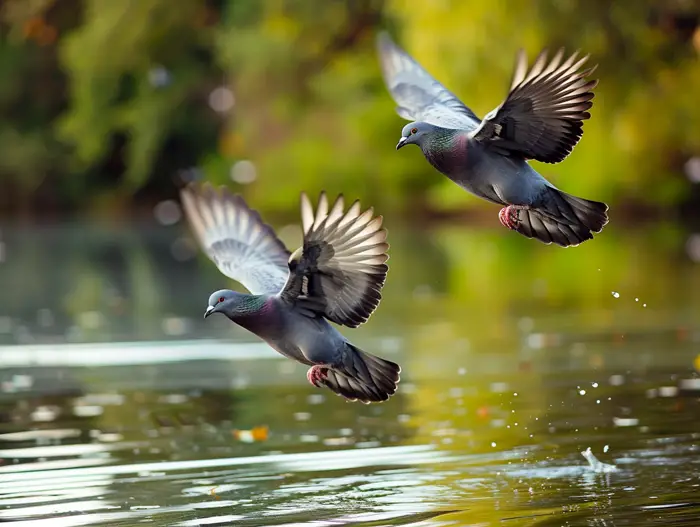
When it comes to training homing pigeons, preparing for their first flight is a crucial step. This initial experience will set the foundation for their future journeys. Here are some key aspects to consider when getting them ready for that exciting first flight:
- Building trust: Before attempting the first flight, it’s essential to establish a strong bond of trust between you and your pigeon. Spend time with them, handle them gently, and create a positive association with your presence.
- Introducing the loft: Familiarize your pigeons with their loft, their home base. Let them explore the surroundings and become comfortable in their new environment. This will help them establish a sense of belonging and security.
- Gradual acclimatization: To ensure a smooth transition, gradually expose your pigeons to the outside environment. Start by opening the loft door for short periods each day, allowing them to become accustomed to the sights, sounds, and smells of the outside world.
- Orientation training: Pigeons have a remarkable sense of direction, but they still need to learn the specific flight paths. Begin by taking them on short release flights, gradually increasing the distance over time. This will help them become more familiar with the surrounding areas and develop their homing skills.
- Flight recognition: In order for your homing pigeons to return to their loft successfully, they need to recognize it from the air. Enhance this ability by using visual cues such as distinctive markings or unique rooftop structures that they can easily spot from above.
By following these steps and ensuring a gradual and confident approach, you will be setting the stage for successful homing pigeon training. Remember, each pigeon is unique, so be patient and tailor your training to their specific needs and progress. Stay tuned for more tips and insights on training these remarkable creatures.
Important Facts and Tips:
- Take the time to build trust with your homing pigeons before attempting the first flight.
- Gradually acclimatize them to the outside environment, starting with short periods outside the loft.
- Start with orientation training, gradually increasing the distance of release flights.
- Help pigeons recognize their loft by using visual cues that can be easily spotted from the air.
Monitoring and Evaluating Progress
When it comes to training homing pigeons, monitoring and evaluating their progress is crucial. It allows me to track their development and make any necessary adjustments to ensure their success. Here are a few key methods I use to keep tabs on my pigeons’ progress:
1. Observing Behavior: I closely observe how the pigeons behave during their training sessions. This includes looking for signs of comfort and confidence, such as flying freely and exploring their surroundings. If I notice any signs of stress or hesitation, I make note of it and consider modifying the training methods.
2. Flight Duration: Another important aspect to monitor is the pigeons’ flight durations. I gradually increase the distances they fly and track their ability to navigate back to the loft. This helps me gauge their overall flying capacity and strengthens their homing instincts.
3. Orientation Skills: As the pigeons progress in their training, I pay close attention to their orientation skills. It’s crucial that they can accurately recognize and find their way back to the loft from different locations. I employ various techniques, like releasing them from unfamiliar areas, to test and improve their ability to navigate effectively.
4. Speed and Efficiency: The speed and efficiency at which the pigeons return to the loft is a key indicator of their progress. I monitor the time it takes for them to complete the flights and analyze their performance. This helps me identify any areas where they may need further training or support.
5. Communication: Regular communication with fellow pigeon trainers is invaluable. I engage in discussions and share experiences with others in the community. This exchange of knowledge allows me to gain insights into different training methods and assess the progress of my pigeons against industry standards.
By incorporating these monitoring and evaluation techniques into my homing pigeon training, I can ensure that each pigeon receives individualized attention and support they need to thrive. This ongoing assessment ensures I can continuously adapt and refine my training methods for optimal results.
Next, I’ll dive into the importance of creating a supportive environment for homing pigeons. Stay tuned for more valuable insights on training these incredible birds.
Conclusion
In training homing pigeons, monitoring and evaluating their progress is key. By observing their behavior, flight duration, orientation skills, speed and efficiency, and communication with fellow trainers, we can provide individualized attention and support for each pigeon. This ensures that they reach their full potential as reliable messengers.
Creating a supportive environment is also crucial in homing pigeon training. By providing a comfortable and safe space, along with proper nutrition and care, we can encourage their growth and development. Additionally, establishing a strong bond between the trainer and the pigeon fosters trust and enhances their training experience.
Remember, training homing pigeons takes time and patience. It’s important to celebrate their achievements and address any challenges along the way. With consistent monitoring, evaluation, and a supportive environment, you’ll be amazed at the progress your pigeons can make.
Stay tuned for our next topic, where we’ll delve into the importance of creating a supportive environment for homing pigeons.

